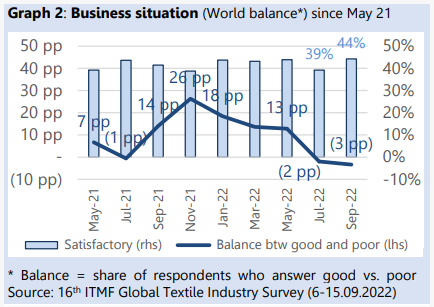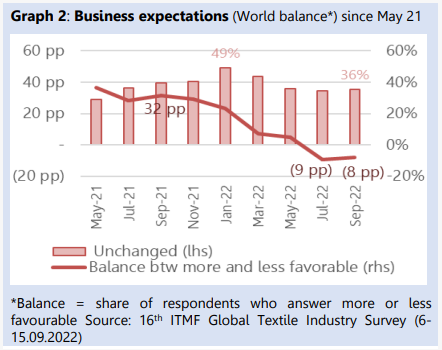According to the 16th Global Textile Industry Survey (GTIS) released by the International Textile Federation (ITMF) on September 28, 2011, the operating conditions of the global textile industry deteriorated in September this year. , expectations for future operations continue to be pessimistic. Global order volumes, backlog and capacity utilization also declined.

ITMF’s survey conducted between September 6-15, 2011 showed that although operations in Asia have improved, they are still the worst. The operating performance of all detailed industries was negative, and the operation of the spinning industry fell to an unprecedented level. The global textile industry’s expectations for future operations are still negative, and operational difficulties continue, although operations are expected to stop further declining in September. Businesses in South Asia, North and Central America, and Africa have improved their future expectations. The global spinning industry’s expectations for March 2023 have improved, indicating that the current operating pressure is expected to ease.

As business conditions deteriorate, textile orders further decrease. Textile companies in North and Central America, especially South America, have seen an increase in orders; operations in Asia are difficult and orders are still not satisfactory. The backlog of orders has generally declined in all regions of the global textile industry; the exception is South America, where both order volumes and backlog have increased. Analyzing by industry, only the backlogs of the dyeing and finishing industry and the knitted/woven fabrics industry increased slightly, while the backlogs of other textile industries all decreased. Global capacity utilization declined in September 2011, but South American capacity utilization increased. Analyzing by industry, the capacity utilization rate of the fiber industry has declined, and the trend of declining capacity utilization rate of the home textile industry seems to have been reversed.
In the next six months, weakening demand, rising raw material prices, rising energy costs, and inflation are the four major factors that the global textile industry is worried about affecting operations. At the same time, concerns about transportation costs have declined significantly. On the other hand, concerns about geopolitics have increased significantly in the past two months.
[Note: The Global Textile Industry Survey Report (GTIS) released by the International Textile Federation (ITMF), formerly ITMFCoronasdfssdfsSurvey-ITMF In order to understand the impact of the epidemic crisis on the global textile industry Investigation on the impact of







